 W
WThe Battle of Acosta Ñu or Campo Grande was a battle during the Paraguayan War, fought on August 16, 1869, between the Triple Alliance and Paraguay. The 3,500 poorly armed Paraguayans, mostly boys between nine and 15 years old, old men and wounded combatants, confronted 20,000 Brazilian veteran soldiers.
 W
WThe Battle of Avay of 11 December 1868 was one of the last major combat engagements of the Paraguayan War, fought near the Avay stream in Paraguayan territory between the forces the Triple Alliance and the Paraguayan Army.
 W
WThe Campaign of the Hills was the last campaign of the Paraguayan War, lasting from July 1869 to the end of the war on March 1, 1870. The Paraguayans were completely defeated by the Allies. Brazilian writer Alfredo d'Escragnolle Taunay, Viscount of Taunay took part in the campaign and later wrote about it. At least 5,000 Paraguayans were killed during this campaign.
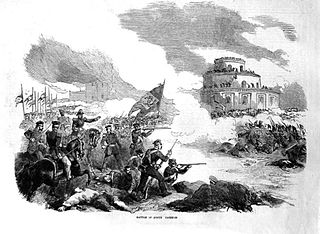 W
WThe Battle of Caseros was fought near the town of El Palomar, Buenos Aires Province, Argentina, on 3 February 1852, between the Army of Buenos Aires commanded by Juan Manuel de Rosas and the Grand Army led by Justo José de Urquiza. The forces of Urquiza, caudillo and governor of Entre Ríos, defeated Rosas, who fled to the United Kingdom. This defeat marked a sharp division in the history of Argentina. As provisional Director of the Argentine Confederation, Urquiza sponsored the creation of the Constitution in 1853, and became the first constitutional President of Argentina in 1854.
 W
WThe Battle of Cerro Corá was fought on 1 March 1870 on a hill-surrounded valley of the same name, in the north-east of Paraguay. This was the last battle in the Paraguayan War.
 W
WThe Battle of Curupayty was a key battle in the Paraguayan War. On the morning of September 22, 1866, the joint force of Brazilian, Argentine, and Uruguayan armies attacked Paraguayan fortified trenches on Curupaity. The Paraguayans were led by General José E. Díaz. This position was held by 5,000 men and 49 cannons, some of them in hidden places out of the attackers view. The Brazilian Navy gave support to the 20,000 assailants, but the ships had to keep some distance from the guns at the fortress of Humaitá, which led to the lack of accuracy and impact of the ship's fire. The navy's failure was crucial at the later ground battle result.
 W
WThe Battle of Estero Bellaco was one of the bloodiest battles of the Paraguayan War (1865–1870), with the Republic of Argentina, the Empire of Brazil and the Oriental Republic of Uruguay banded together against the Paraguayan government of Marshal Francisco Solano López.
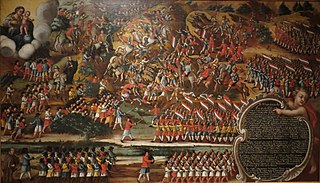 W
WThe First Battle of Guararapes was a battle in a conflict called the Pernambucana Insurrection, between Dutch and Portuguese forces in Pernambuco, in a dispute for the dominion of that part of the Portuguese colony of Brazil.
 W
WJaboatão dos Guararapes is a city in the state of Pernambuco, Brazil. It is a part of the Recife metro area. The population was 697,636 according to the Brazilian Institute of Geography and Statistics (IBGE) in 2018, making it the second most-populous city in the state of Pernambuco and the 27th in Brazil, ahead of major Brazilian state capitals such as Cuiabá and Aracaju. The city is a very important industrial center, hosting companies like Unilever and Coca-Cola. It is bordered by Recife in the North, Cabo de Santo Agostinho on the south, and Mangue forests to the west in Moreno.
 W
WThe Second Battle of Guararapes was the second and decisive battle in a conflict called Pernambucana Insurrection, between Dutch and Portuguese forces in February 1649 at Jaboatão dos Guararapes in the Brazilian state of Pernambuco. The defeat convinced the Dutch "that the Portuguese were formidable opponents, something which they had hitherto refused to concede." The Dutch still retained a presence in Brazil until 1654 and a treaty signed in 1661.
 W
WOn the morning of December 6, 1868, Marshal of the Brazilian Army, Luís Alves de Lima e Silva, Marquis of Caxias, moved with 16,999 infantrymen, 926 cavalrymen and 742 artillerymen, to take Villeta, a Paraguayan city, as a plan to make further attacks on the Paraguayan Army rear. Nevertheless, Paraguayan president and commander-in-chief of the army Francisco Solano López was aware of the landing the Allies had made in the rear of his army.
 W
WThe Battle of Ituzaingó was fought in vicinity of the Santa Maria River, in a valley of small hills where a stream divided the valley into two.
 W
WThe Battle of Jenipapo was fought near the river Jenipapo in the then province of Piauí, on 13 March 1823, between the Brazilian Army and the Portuguese Army during the Brazilian War of Independence.
 W
WThe Battle of Lomas Valentinas was fought in the Central Department of Paraguay on December 21–27, 1868. The Paraguayan Army, led personally by President Francisco Solano Lopez, were decisively defeated, though he managed to escape. On December 30, 1868, the Paraguayan garrison at Angostura, with 1,907 men, surrendered to the Allies.
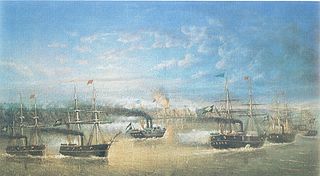 W
WThe Battle of Paso de Cuevas was fought on 12 August 1865 during the Paraguayan invasion of the Argentine province of Corrientes.
 W
WThe Passage of Humaitá was an operation of riverine warfare during the Paraguayan War − the most lethal in South American history − in which a force of six Brazilian Navy armoured vessels was ordered to dash past under the guns of the Paraguayan fortress of Humaitá. Some competent neutral observers had considered that the feat was very nearly impossible.
 W
WThe Battle of Piribebuy was fought on August 12, 1869 in the Paraguayan town of Piribebuy, which was then serving as a temporary capital of the Paraguayan government. The Paraguayan defenders, who were poorly armed and included children, fought the attacks of the Allied forces, led by French-born Brazilian general Prince Gaston, son-in-law of Emperor Pedro II of Brazil. The town refused two peace envoys, calling for surrender, sent by the Conde d'Eu. At 0400, the Brazilian batteries surrounding the town started a bombardment which lasted until 0800, when the infantry charged. Gen. João Manuel Mena Barreto was mortally wounded leading a cavalry charge.
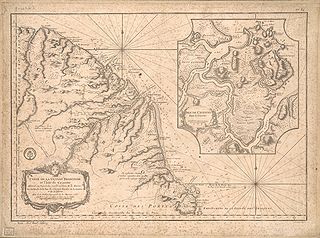 W
WThe Portuguese conquest of French Guiana was an 1809 military operation against Cayenne, capital of the South American colony of French Guiana, in the scope of the Napoleonic Wars. The operation was performed by a combined expeditionary force that included Portuguese and British military contingents.
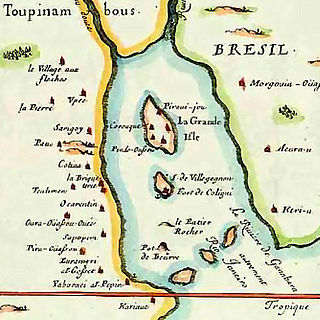 W
WThe Battle of Rio de Janeiro or the Battle of Guanabara Bay was a battle on 20 January 1567 at Rio de Janeiro that ended with the definitive defeat of the French. Specifically, the battle was an attack on the fortification of Uruçú-mirim. The Portuguese commander, Estácio de Sá, was hit by an arrow which perforated his eye, and died on 20 February.
 W
WThe Sacking of Asunción was the occupation of the Paraguyan capital carried out as of January 1, 1869 by Brazilian forces in the Triple Alliance led by General João de Souza da Fonseca Costa. Asunción was deserted, evacuated by all its inhabitants two days before. On January 5 Caxias entered the city with the rest of the army. Most of Caxias army settled in Asunción, where also 4000 Argentinian and 200 Uruguayan troops soon arrived together with about 800 soldiers and officers of the Paraguayan Legion. By this time Caxias was ill and tired. On January 17 he fainted during a mass, relinquished his command on 18th and left for Montevideo on 19th.
 W
WThe Battle of Sarandí was fought on October 12 of 1825, in the vicinity of the Arroyo Sarandí in Uruguay, between troops of the Banda Oriental and the Empire of Brazil. It resulted in a decisive victory for the Orientals.
 W
WThe Siege of Humaitá was a prolonged operation of encirclement that occurred at the Fortress of Humaitá, on the Paraguay River. Humaitá was surrounded by land on 2 November 1867, by water on 19 February 1868, and surrendered on 25 July 1868.
 W
WThe Battle of Tatayiba was a cavalry engagement between a Paraguayan force led by future President Bernardino Caballero and a Brazilian force led by the Duke of Caxias. The Brazilians, outnumbering the Paraguayans nearly 3 to 2, were victorious.
 W
WThe Battle of Tuyutí was a Paraguayan offensive in the Paraguayan War targeting the Triple Alliance encampment of Tuyutí. It is considered to be the bloodiest battle ever in South America. The result of the battle was an Allied victory, which added the to Paraguayan troubles that had begun bu failed offensives and the loss of its fleet in the Battle of Riachuelo. Another attack on the Allied camp was made in November 1867.
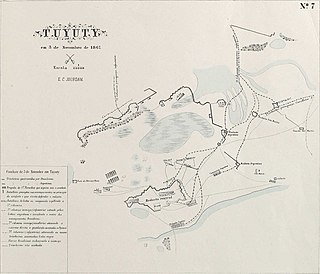 W
WThe Second Battle of Tuyuti was fought on November 3, 1867 between the Paraguayan Army and a smaller allied Brazilian-Argentinian force. The Paraguayans lost twice as many soldiers as the allies and were defeated.
 W
WIn the Paraguayan War, the Battle of Yatay was fought on August 17, 1865 between the troops of the Triple Alliance and the soldiers of Paraguay near Paso de los Libres, Corrientes, Argentina.